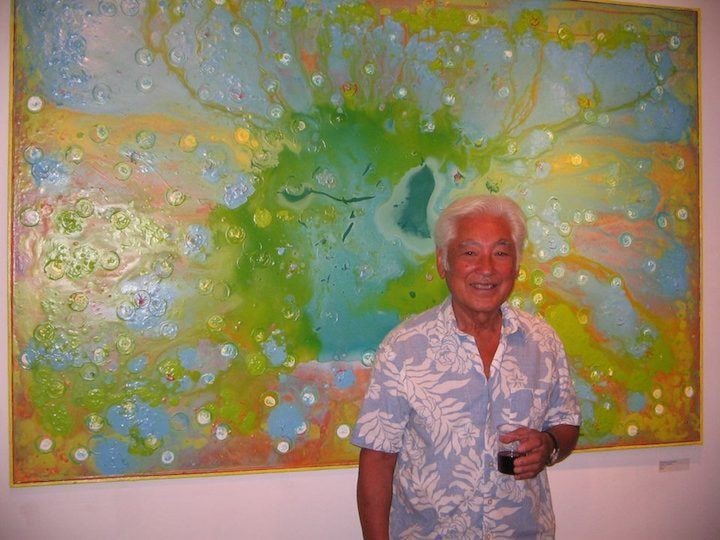Recently, I wrote about the discovery of a handful of Japanese Canadian names exposed on an exterior wall of the Slocan Legion during renovations. The only easily readable signature — and a rather stylish one at that — was “Sam Miyashita, Popoff, Slocan.”
The mention of Popoff, one of the internment camps, dated the signature to between 1942 and 1945. However, I wrote that I wasn’t able to learn anything about Sam Miyashita.
Chuck Tasaka, an author friend of mine, took up the challenge, sending out rafts of emails to his extensive network of contacts to see if anyone knew what happened to him. It worked.
 Sam Miyashita was born in Vancouver, moved to Steveston, and was interned in Kaslo when Japanese Canadians were exiled from the Lower Mainland during the Second World War.
Sam Miyashita was born in Vancouver, moved to Steveston, and was interned in Kaslo when Japanese Canadians were exiled from the Lower Mainland during the Second World War.
After three years, the family went to Popoff. It would have been 1945 that he wrote his name on the hall. The family then moved to New Denver, and the following year Miyashita moved to Toronto, where he went by the name Sam Sueshi Miya and was a well-known musician and artist.
According to his sister Lewie, he lived in the city’s Parkdale/Roncevalles area and had many friends. He died last Nov. 14, age 84, and is survived by two daughters. Over 200 people came to his memorial.
In an eerie coincidence, the signature he placed on the Slocan Legion when he was a teenager was uncovered two weeks after his passing.
Last year a friend set up a Facebook page for him, where you can see examples of his work.
SPRINGS SOLD: My reaction to news the Lower Kootenay Band has acquired Ainsworth Hot Springs Resort was, I suspect, like most people: wow. After more than 50 years in the same family, it never occurred to me that the springs would change hands anytime soon, much less be acquired by a group whose involvement with them goes back even further.
 Also interesting to learn from chief Jason Louie that the Ktunaxa name for the springs is nupika wu’u, meaning “spirit water.” First I’ve heard of it. In 1891, anthropologist Alexander F. Chamberlain recorded the Ktunaxa name for the hot springs as a’k1nuxleetna’na, but gave no translation.
Also interesting to learn from chief Jason Louie that the Ktunaxa name for the springs is nupika wu’u, meaning “spirit water.” First I’ve heard of it. In 1891, anthropologist Alexander F. Chamberlain recorded the Ktunaxa name for the hot springs as a’k1nuxleetna’na, but gave no translation.
Meanwhile, poking around a digitized newspaper website, I came across something that sheds more light on how the horseshoe caves came to be. Previously I thought they dated to 1930, when John Burns developed the springs commercially and hired miner Bob Sherraden to create them.
According to longtime resident Mavis Stainer, Sherraden did blast out the tunnel that is further away from the hotel and the cross passage, but it turns out the original tunnel was the result of a failed development attempt in 1911 by Thomas Procter, W.J. Wilson, and J.W. Smith.
The following story appeared in the Winnipeg Tribune of July 13, 1911 and 16 days later in the Vancouver Daily World, where it carried the headline “Tunnel has tapped Ainsworth springs.”
“The town of Ainsworth, known to fame as the oldest silver-lead camp of the Kootenay, is likely to become a tourist centre. The hot springs, which for ages have gushed down the slopes of the hill above the town, and in winter painted the snowy hillside a combination of ochre and green, have been tapped at depth, to use a mining term, by a tunnel, which crosses the strata through which the lithia water percolates, this tunnel acting a reservoir for the collection of the water. Cement tanks have been built, a row of summer cottages is planned by the syndicate that owns the springs, and probably the new resort will be in actual use this season.”
However, those plans fell through for reasons I’ve never been able to determine.
When future author Clara Graham arrived in 1912 to teach school at Ainsworth, she found “A concrete swimming tank had been built adjacent to the hot springs some time before, but a corner of it had been blasted out apparently to prevent a drowning accident.”
(CORRECTION: An earlier version of this column erroneously stated that Elizabeth Yuriko Fujita was Sam Miyashita's sister.)
